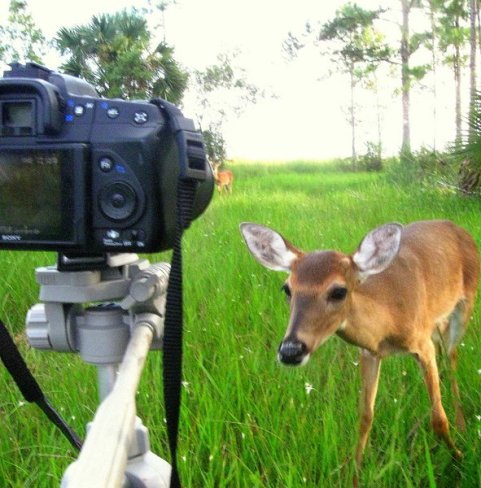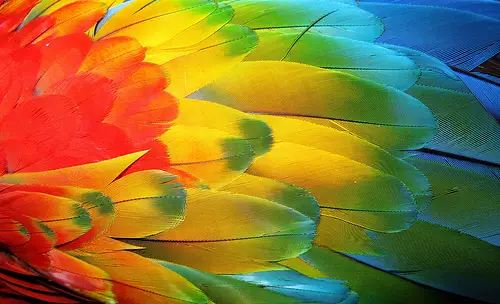6 Tips for Becoming a Great Deer Photographer
Wildlife photography can often prove quite challenging, especially when it comes to photographing game animals such as deer. Photographing deer can be equally as difficult as hunting them, requiring you to have immense patience, proper technique, and the right equipment. Here are our top tips for taking better photos of deer.
Quality Equipment
Investing in the right camera is the first step to taking great wildlife shots. A DSLR camera will allow you to interchange lenses to get a wide variety of different shots. When it comes to photographing shy animals such as deer, you are going to need a decent sized telephoto lens. A 300mm or 400mm telephoto lens is the minimum telephoto length you’ll need to get an animal to fill the frame. Look into teleconverter lenses that can further increase the reach of your telephoto lens by a factor of 1.4x or 2x.
Prices of camera bodies and lenses vary considerably, starting with basic consumer models up to the professional level. You have to determine how much you want to invest in your equipment and what the purpose of your photography will be. Are you simply looking to capture some personal memories for yourself or are you looking to get your images published by a magazine.
For the best quality images, you’ll want to look for a camera with a high megapixel count and a telephoto lens with a wide aperture to allow in more light for crisp photos even in low light situations. The better the optics and wider the aperture a lens offers, the more expensive it will be.


Lighting
Photography is all about lighting. When it comes to photography deer, early morning and just before sunset makes for the most pleasing light. Luckily this coincides when deer are most active, especially during summer when they usually rest during the heat of the day.
Photographing deer during the winter can produce striking images but getting the right exposure can be very difficult when shooting against white snow. You will often have to increase the exposure time to compensate for your camera being thrown off by the stark white snow in your frame and incorrectly selecting a much too low exposure. You can avoid high levels of contrast in winter as well as other seasons by choosing to photograph on slightly cloudy days.


Different Angles
Getting the right angle when shooting deer can really elevate the quality of your pictures. This is one aspect of an image that cannot be photoshopped after the shot has already been taken, so getting it right is crucial. The angle of your picture will largely depend on the reason you are photographing deer in the first place.
Are you looking mainly to document a buck with large antlers or are you trying to capture a moment of an animal in its natural habitat? Get creative and shoot from below or above for more interesting photos. Think about what is in the foreground and background, trying to remove clutter to bring more attention to the deer and adding color in the form of plants or flowers for a more pleasing image.
In the wild, you aren’t always offered the luxury of having ample time to set up your shots of deer. A clever way to keep deer in place is to lure it to the place you desire. Setting up a deer feeder like those offered on Feedthatgame.com is an easy and surefire way to encourage deer in to a location and it allows you the time needed to capture a quality image since the deer will be preoccupied feeding. You may also want to look into infrared trail cameras that can capture images without you even being there. You can’t scare away a deer if you aren’t present.


standing deer feeder: photo by Kurt Magoon, hanging deer feeder: photo by B A bowen photgraphy
Know Your Area
Knowing the area you are shooting in will minimize the time it takes to get the great quality pictures that you want. Knowing popular spots where deer often pass through will give you enough time to set up your equipment, get comfortable, and wait for them to come to you. Look for game trails, scat, and antler rub marks which signals where deer may be present.
Large reserves or national parks may seem like a good place to photograph deer, but often animals in more remote or expansive wilderness areas have less contact with humans and are therefore much more skittish. Local parks or backyards that back onto woodlands may allow you to get closer to animals which are much more tame and comfortable around humans.


Avoid Detection
Deer have an incredible sense of smell and will definitely be able to smell you long before they lock eyes with you. To avoid frightening them, avoid wearing strong perfumes, colognes, or deodorants. Even freshly washed clothing can give off a strong scent of detergent. You don’t necessarily need to stop showering for days before photographing, but the more natural your scent the better. You can always mask your scent with things like deer urine if you’re really keen to get good pics.
When it comes to a deer’s sight, they don’t see things as we do. They are blind to several colors such as red and green. It’s more important to disguise your shape than what color you’re wearing. You can wear camouflage much like a hunter does or take refuge in a hide that will go more undetected.
Another key to getting close to deer is to be quiet. It’s better to have the deer come to you than you trying to approach. Stepping on leaves and twigs, especially during fall can quickly scare off a deer. Sometimes hiking after a good rain can help better muffle your footfall.


Go Slow
Creeping stealthily and slowly can really work in your favor when approaching a herd of deer. Sometimes it is not so much about going undetected as it is respecting boundaries and reading each unique situation.
Giving these animals the space they need, will help build trust and allow you to edge closer much quicker than you think. The more you try to force your way towards the deer too quickly, the better chance the animals will flee. Of course during the rut season you must be careful to not approach too close as bucks can become overly aggressive.


Photographing deer can be a rewarding experience and a nice alternative for those not into hunting with a rifle or bow. Even some hunters become photographers after they have filled their tags for the season. For many it’s all about being outdoors and the thrill of the hunt, even if it means coming back with a trophy in the form of a framed print on the wall. We hope these handy tips make your images take center stage on your social media feed.




















November 20, 2018
Great tips. It starts with having the right camera as you rightly put it and then getting in the right position without scaring away the deer.
Thanks for sharing.